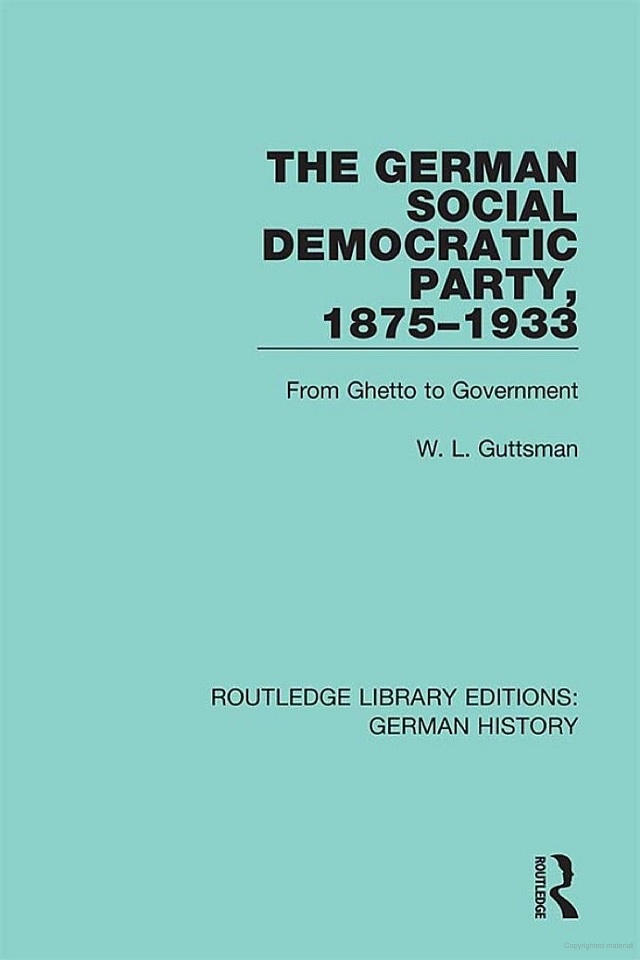Biblioteca / 1980-1989
Wilhelm L. Guttsman. The German Social Democratic Party, 1875-1933. From Ghetto to Government.
Londres: George Allen & Unwin, 1981.
xii, 362 páginas.

Contents
Introduction: Models and methods
1 – Industrialisation and the entry of the German working class into politics
Industrialisation and protest
The rise of working-class organisations
The belated industrial revolution
Towards a united working-class party
Early organisation and political representation
2 – The role of the working-class party in the pseudo-democratic state
The class struggle and the people’s state
The weapon of the franchise
The constitutional system of the empire and the emergent SPD
The state versus the SPD
Lawful action by the outlawed
Parliamentary tactics and popular control
Towards democratic Marxism: the Erfurt programme of 1891
3 – The political mobilisation of the German working class and the SPD
Electoral trends and the socialist vote to 1912
Social structure and socialist voting
Class, region and vote
Social groups marginal to the working class and support for the SPD
The penumbra of socialist support before the war
The socialist voting trend to 1914
Political mobilisation and the divided working class under Weimar
On the road to a people’s party?
4 – Social milieu, political control and the grass roots of social democracy
The struggle against the socialist hydra
A semi-fettered party
The socialist milieu
The Social Democratic Party organisation
The party membership
The embourgeoisement of the workers’ party
5 – The elective fatherland: Socialist subculture from ghetto to republic
Agitation for persuasion and solidarity
Labour’s high days and holidays
The problem of political education and its solution before 1914
The emergence of a centralised system of party education
The Social Democratic movement and education and culture under Weimar
Socialist Kultur and its organisation
The Social Democratic subculture and socialist commitment
Sub-culture, high culture and counter-culture
6 – The structure of a democratic party in action: Mass membership, leadership and bureaucracy
The evolution of the organisational structure and the democratic process
The structure of the SPD under Weimar
Local party democracy
Power and participation
Functionaries, officers and leaders
Leadership and bureaucracy
Career patterns and embourgoisement
Leaders and followers
7 – A revolutionary but not a revolution-making party?
Theory and tactics from Erfurt to Weimar
The ‘old, proven and victorious’ tactics after 1890
German trade unionism and the road to pragmatic politics
The mass-strike debate of 1905
Goal versus movement: strategical theories and practice before 1914
The socialist party in the democratic state: 1918-32
Conclusions